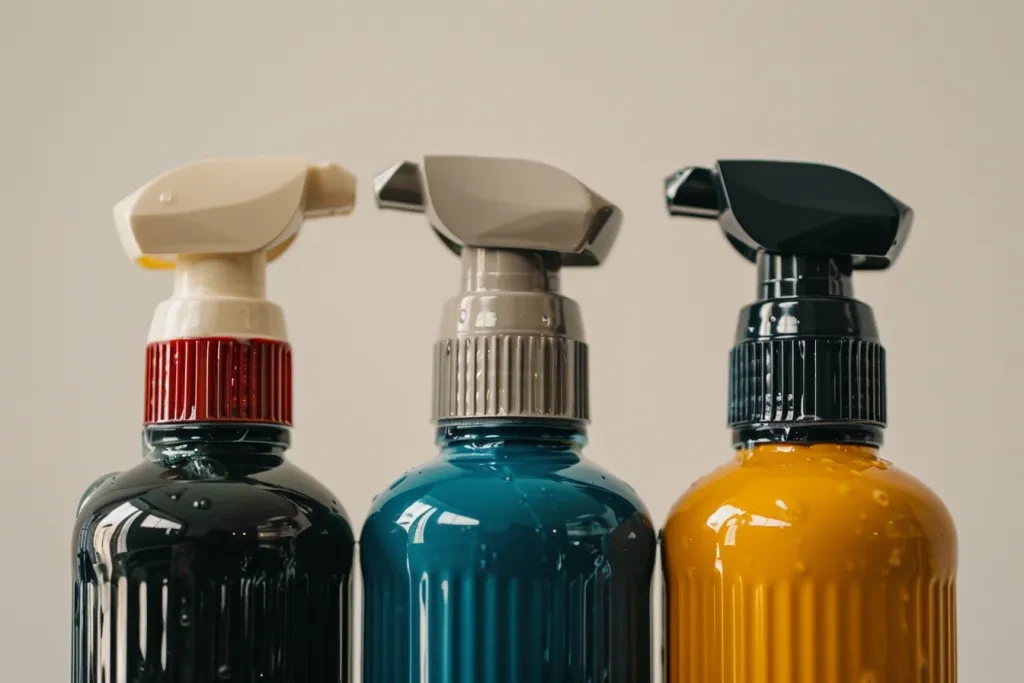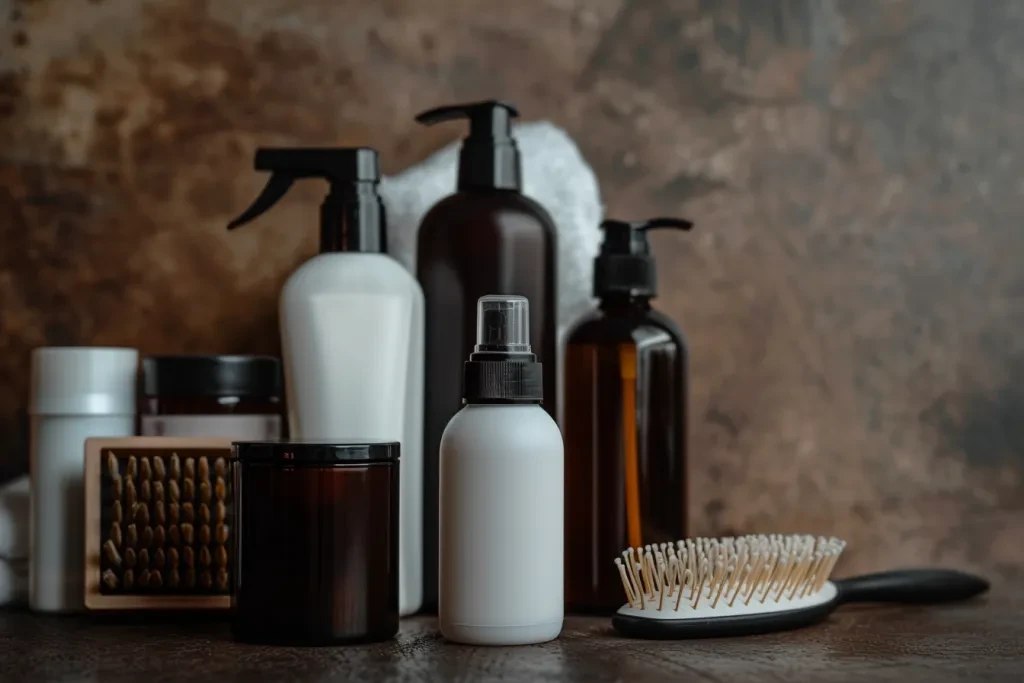In the ever-evolving world of beauty and personal care, shampoo and conditioner remain essential staples. As we step into 2025, the market for these hair care products is not only expanding but also transforming in response to consumer demands and technological advancements. This article delves into the current trends and market potential of shampoo and conditioner, highlighting the key factors driving their growth.
Table of Contents:
1. Exploring the Buzz Around Shampoo and Conditioner: Market Potential and Trends
2. Diverse Shampoo and Conditioner Types: Pros, Cons, and Consumer Insights
3. Addressing Consumer Pain Points: Solutions in the Shampoo and Conditioner Market
4. Key Considerations for Sourcing High-Quality Shampoo and Conditioner
5. Final Thoughts on Sourcing Shampoo and Conditioner for Business Buyers
Exploring the Buzz Around Shampoo and Conditioner: Market Potential and Trends

Defining Shampoo and Conditioner: Essentials for Hair Care
Shampoo and conditioner are fundamental components of any hair care routine. Shampoo serves as a cleansing agent, effectively removing dirt, oil, and impurities from the hair and scalp. Conditioner, on the other hand, moisturizes and softens the hair, reducing frizz and enhancing manageability. Together, they play a crucial role in maintaining hair health and hygiene.
The global market for shampoo and conditioners has seen robust growth in recent years. According to a professional report, the market size increased from $36.29 billion in 2023 to $39.21 billion in 2024, with a compound annual growth rate (CAGR) of 8%. This upward trajectory is expected to continue, reaching $54.27 billion by 2028. The driving forces behind this growth include shifts in consumer preferences, heightened awareness of hair health, and advancements in product formulations.
Social Media Trends Driving Demand
Social media platforms have become powerful influencers in the beauty industry, and hair care is no exception. Hashtags like #HairGoals, #HealthyHair, and #NaturalHair have garnered millions of posts, reflecting a growing interest in hair care routines and products. Influencers and beauty bloggers frequently share their hair care tips and product recommendations, creating a ripple effect that drives consumer demand.
The rise of social media trends has also led to an increased focus on natural and organic hair care products. Consumers are becoming more conscious of the ingredients in their hair care products, seeking out formulations that are free from harmful chemicals like sulfates and parabens. This shift towards clean beauty is not just a passing fad but a significant trend that is shaping the future of the shampoo and conditioner market.
Aligning with Broader Beauty and Wellness Trends
The broader trends in beauty and wellness are also influencing the shampoo and conditioner market. There is a growing emphasis on holistic health and self-care, with consumers looking for products that offer more than just basic hair care. This has led to the development of shampoos and conditioners with targeted benefits, such as anti-dandruff, anti-hair fall, and scalp treatments.
Technological innovations are playing a pivotal role in this evolution. Companies are introducing products with advanced formulations that cater to specific hair concerns. For instance, the integration of natural and organic ingredients, the introduction of sulfate-free options, and the use of innovative ingredients like keratin and argan oil are becoming increasingly popular.
Moreover, the expansion of distribution channels, including e-commerce platforms, has made it easier for consumers to access a wide range of hair care products. The convenience of online shopping, coupled with detailed product descriptions and customer reviews, allows consumers to make informed choices, further driving market growth.
In conclusion, the shampoo and conditioner market is poised for significant growth in the coming years. The convergence of social media trends, consumer demand for natural and sustainable products, and technological advancements are shaping the future of hair care. As we move forward, businesses in the beauty industry must stay attuned to these trends to capitalize on the burgeoning opportunities in the market.
Diverse Shampoo and Conditioner Types: Pros, Cons, and Consumer Insights

Sulfate-Free Formulations: Benefits and Drawbacks
Sulfate-free shampoos and conditioners have gained significant traction in recent years, driven by the increasing consumer awareness of the potential adverse effects of sulfates on hair and scalp health. Sulfates, commonly found in many traditional shampoos, are known for their strong cleansing properties. However, they can strip the hair of its natural oils, leading to dryness and irritation, particularly for individuals with sensitive scalps or color-treated hair. According to a report by Statista, the demand for sulfate-free products has surged, with a notable increase in market share from 2023 to 2024.
The primary benefit of sulfate-free formulations is their gentle cleansing action, which helps maintain the hair’s natural moisture balance. This makes them particularly suitable for individuals with dry, damaged, or chemically treated hair. Additionally, sulfate-free products are less likely to cause scalp irritation, making them a preferred choice for those with sensitive skin. However, the drawback lies in their cleansing efficacy. Sulfate-free shampoos may not lather as well as their sulfate-containing counterparts, which can lead to a perception of less effective cleaning. Business buyers should consider these factors when sourcing products, ensuring they meet the specific needs of their target consumers.
Organic and Natural Options: Ingredients and Effectiveness
The shift towards organic and natural hair care products is another significant trend in the shampoo and conditioner market. Consumers are increasingly seeking products that are free from synthetic chemicals and are made with natural ingredients. This trend is driven by a growing awareness of the potential health risks associated with synthetic chemicals and a desire for more sustainable and eco-friendly products. According to a professional report, the global market for organic and natural hair care products is expected to grow at a compound annual growth rate (CAGR) of 8.4% from 2024 to 2028.
Organic and natural shampoos and conditioners often contain ingredients such as aloe vera, chamomile, and coconut oil, which are known for their nourishing and moisturizing properties. These products are generally perceived as safer and more environmentally friendly, appealing to health-conscious and eco-conscious consumers. However, the effectiveness of these products can vary depending on the formulation and the specific needs of the hair. For instance, while natural ingredients can provide excellent hydration and nourishment, they may not be as effective in addressing specific hair concerns such as dandruff or hair loss. Business buyers should evaluate the ingredient lists and efficacy claims of these products to ensure they meet the expectations of their customers.
Specialized Products: Targeting Specific Hair Concerns
The market for specialized shampoos and conditioners targeting specific hair concerns is expanding rapidly. Products designed to address issues such as hair loss, dandruff, and scalp sensitivity are becoming increasingly popular. According to a report by Nielsen, the demand for hair care products with targeted benefits has grown significantly, with a notable increase in sales of anti-dandruff and anti-hair fall products.
Specialized shampoos and conditioners often contain active ingredients such as biotin, zinc, and salicylic acid, which are known for their efficacy in addressing specific hair and scalp issues. For example, biotin is widely recognized for its role in promoting hair growth, while zinc is effective in controlling dandruff. These products are formulated to provide targeted solutions, making them highly appealing to consumers with specific hair concerns. However, the effectiveness of these products can vary, and it is essential for business buyers to verify the claims made by manufacturers and ensure that the products meet the regulatory standards in their respective markets.
Addressing Consumer Pain Points: Solutions in the Shampoo and Conditioner Market

Combatting Hair Damage: Effective Ingredients and Products
Hair damage is a common concern among consumers, often resulting from factors such as heat styling, chemical treatments, and environmental exposure. To address this issue, many shampoos and conditioners are formulated with ingredients that help repair and protect the hair. According to a report by The Benchmarking Company, 51% of consumers are interested in hair care products that promote hair health and repair damage.
Ingredients such as keratin, argan oil, and hydrolyzed proteins are commonly used in products designed to combat hair damage. Keratin, a protein naturally found in hair, helps strengthen and repair damaged hair, while argan oil provides deep hydration and nourishment. Hydrolyzed proteins penetrate the hair shaft, helping to rebuild and strengthen the hair from within. Products such as Marc Anthony’s Repair Bond + Rescuplex collection, which includes a range of shampoos and conditioners formulated with these ingredients, have gained popularity for their effectiveness in repairing and protecting damaged hair.
Tackling Scalp Issues: Innovations in Formulations
Scalp issues such as dandruff, dryness, and sensitivity are prevalent among consumers, driving the demand for innovative hair care solutions. According to a report by WGSN, the focus on scalp health has increased, with a 32% rise in consumer interest in scalp care products. Innovations in formulations have led to the development of shampoos and conditioners that address these specific concerns.
Ingredients such as salicylic acid, tea tree oil, and niacinamide are commonly used in products designed to tackle scalp issues. Salicylic acid helps exfoliate the scalp, removing dead skin cells and reducing dandruff, while tea tree oil has antimicrobial properties that help soothe and cleanse the scalp. Niacinamide, a form of vitamin B3, helps improve the scalp’s barrier function, reducing dryness and sensitivity. Products such as Head & Shoulders Clinical Strength Shampoo, which contains these active ingredients, have been well-received for their efficacy in addressing scalp issues.
Enhancing Hair Growth: Popular Products and Their Efficacy
Hair growth is a significant concern for many consumers, leading to a growing market for products that promote hair growth and prevent hair loss. According to a report by Statista, the global market for hair growth products is expected to reach $14.1 billion by 2027. Popular ingredients in hair growth shampoos and conditioners include biotin, caffeine, and minoxidil.
Biotin, also known as vitamin B7, is essential for healthy hair growth and is commonly found in hair growth products. Caffeine stimulates hair follicles, promoting hair growth and reducing hair loss. Minoxidil, an FDA-approved ingredient, is widely recognized for its effectiveness in treating hair loss. Products such as Rogaine’s Hair Regrowth Treatment, which contains minoxidil, have been proven to be effective in promoting hair growth and preventing hair loss. Business buyers should consider the efficacy and regulatory compliance of these products when sourcing hair growth solutions.
Key Considerations for Sourcing High-Quality Shampoo and Conditioner

Evaluating Ingredient Quality and Safety Standards
When sourcing shampoos and conditioners, it is crucial to evaluate the quality and safety of the ingredients used in the formulations. According to a report by Research and Markets, the rising awareness regarding personal hygiene and the potential health risks associated with certain chemicals has led to an increased demand for products with safe and high-quality ingredients. Business buyers should ensure that the products they source comply with local regulatory standards and do not contain harmful chemicals such as parabens, sulfates, and phthalates.
Ingredients should be sourced from reputable suppliers, and manufacturers should provide detailed information on the sourcing and processing of these ingredients. Additionally, third-party certifications such as USDA Organic, COSMOS, and Ecocert can provide assurance of the quality and safety of the ingredients used in the products. Business buyers should also consider conducting independent testing to verify the claims made by manufacturers and ensure the safety and efficacy of the products.
Understanding Packaging and Sustainability Trends
Sustainability is a growing concern among consumers, and this trend is reflected in the packaging choices for shampoos and conditioners. According to a report by Euromonitor, the demand for sustainable packaging solutions has increased, with consumers seeking products that minimize environmental impact. Business buyers should consider sourcing products with eco-friendly packaging options such as recyclable, biodegradable, or refillable packaging.
Manufacturers are increasingly adopting sustainable practices, such as using recycled materials, reducing plastic usage, and implementing refill programs. For example, brands like L’Oréal and Unilever have committed to using 100% recyclable or reusable packaging by 2025. Business buyers should evaluate the sustainability practices of manufacturers and choose products that align with their sustainability goals and the preferences of their customers.
Partnering with Reliable Manufacturers and Suppliers
Establishing partnerships with reliable manufacturers and suppliers is essential for sourcing high-quality shampoos and conditioners. According to a report by Research and Markets, the global shampoo and conditioner market is highly competitive, with numerous players offering a wide range of products. Business buyers should conduct thorough due diligence to identify reputable manufacturers and suppliers with a proven track record of delivering high-quality products.
Factors to consider when evaluating potential partners include their manufacturing capabilities, quality control processes, regulatory compliance, and customer service. It is also important to assess their ability to innovate and adapt to changing market trends. Building strong relationships with reliable partners can help ensure a consistent supply of high-quality products and provide a competitive advantage in the market.
Final Thoughts on Sourcing Shampoo and Conditioner for Business Buyers

In conclusion, sourcing high-quality shampoos and conditioners requires a comprehensive understanding of market trends, consumer preferences, and regulatory standards. Business buyers should prioritize products with safe and effective ingredients, sustainable packaging, and reliable manufacturing practices. By staying informed about the latest developments in the hair care industry and partnering with reputable suppliers, business buyers can meet the evolving needs of their customers and achieve success in the competitive market.




